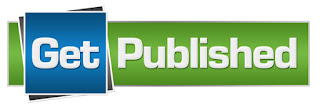![Quiet: The Power of Introverts in a World That Can't Stop Talking by [Cain, Susan]](https://images-na.ssl-images-amazon.com/images/I/41sRMTzntYL.jpg)
Must
you be pushy to succeed as a woman over 60?
Books
and articles on becoming successful often emphasize personality over character,
urging natural introverts (about one-third of the U.S. population, and usually
women) toward imitating extroverts. Au
contraire! Former Wall Street lawyer Susan Cain defends introverts like
herself in her best-selling, widely enthusiastically reviewed recent book, Quiet: The Power of Introverts in a World that Can’t Stop
Talking.
Making
of the Meek and of the Bold
Children more sensitive than
average to their surroundings, parents, and peers tend to become introverts as
adults, seeking quiet rather than noise, calm rather than activity, liking being
alone. Such sensitive children become more considerate and agreeable than most,
often preferring individual achievement to group endeavors. They also gravitate
toward individualized participation in the arts and sciences.
Introverts are unusually
sensitive, thus empathetic; they speak more softly and like to be spoken to
softly. They laugh more than do extroverts, yet prefer more serious topics.
Introverts are more sensitive to loss, being cautious, risk-averse, avoiding
controversy.
Extroverts are more
attuned to gain, risk-seeking. Extroverts enjoy competition, sometimes even relish
controversy. They are stereotypically leaders. Acting like an extrovert,
including when socializing, is an effort for introverts, but many can do it,
sometimes convincingly.
Which type are you? You
can investigate by taking the widely-used Myers-Briggs Type Indicator online here. Most
people are not “purely” one type or the other, instead lying somewhere between
the extremes.
If you
are pretty much an introvert, you aren’t denied a happy and fruitful life,
however.
How
Do Introverts Succeed? “Still Waters Run Deep”
Working alone or in small
groups, introverts succeed by giving greater thought to their endeavors,
diligently, and by using their natural tendency to be empathetic to form close
relationships with a few others, drawing out their best ideas. Steve Jobs’s
co-developer of the Apple Computer, Steve Wozniak, much preferred working out
problems on his own rather than in a group setting, and this istrue of many
successful inventors and artists.
Although those who speak
fluently and forcefully are stereotypically perceived as having greater
leadership ability and as being brighter than their quieter peers, neither of
these has been found to be true.
Action-oriented extroverts are
reward-sensitive, more likely to leap before they look; introverts are
loss-sensitive and tend to look before they leap. Wall Street extrovert bulls may
fuel rising markets; introvert bears play it safe, lessening their losses on
the downturns.
At play, introverts prefer
socializing with fewer people in quieter and more intimate settings than do
their more outgoing, extrovert friends. A “mixed” introvert-extrovert couple
will need to recognize this and seek settings and events that are compromises.
Alternatively, they can decide to create schedules that alternate between their
preferred styles.
Too
Much Talk?
Susan
Cain’s subtitle, The Power of Introverts in a World that Can’t
Stop Talking, suggests a frustration with the garrulousness
of some people. Extroverts can hog the conversation, making
introverts hardly heard. Both should be able to contribute.
Since
they are not engrossed in framing what they will say next, introverts are
generally good listeners. Whether in school or at work, such quiet ones need to
have their opinions solicited, preferably with plenty of advance notice. Disliking
surprises, they may do better by writing out beforehand what they intend to
say.
Some people
talk because they want to get something from their listeners rather than want
to give something. A manipulative talker argues, persuades, nudges, suggests,
pleads, berates, and wheedles, to name a few. Conversation should be a form of
exchange, a trade. If one party is lying or deceptive, this is exchanging
counterfeit words for honest words of the person he is talking to. No wonder we
prize honesty.
Or
Too Little?
Granted, virtues can be
overdone, becoming vices. Too little talk makes us mysteries to one another.
Misunderstandings arise. Sometimes we must speak up and ask others to do so,
too.
“The
Meek Shall Inherit the Earth” (Matthew 5:5)
Introverts
can flourish in an extrovert-dominated world by focusing on their talents and natural
empathy, occasionally pushing themselves to be more outgoing to be sure to be
heard and heeded.
If
the meek do inherit the Earth, it will probably be run by extroverts…getting
many of their good ideas from introverts, often women. As Nobel physicist
Stephen Hawking noted, “Quiet people have the loudest minds.”
Questions
Are you more an introvert or extrovert? In
which situations, in solitude or in a group, do you do your best work? How have
you adapted your style on occasion?
###
Douglas Winslow Cooper,
Ph.D., is a former Harvard science professor. He still publishes, and he helps
others write and publish their books via his http://WriteYourBookWithMe.com. Douglas’s life's
central theme has been his half-century romance with Tina Su Cooper,
quadriplegic for over a decade due to multiple sclerosis, receiving 24/7
nursing care at home, care discussed at their website here.
###
Originally published in somewhat edited form at:
http://sixtyandme.com/the-quiet-power-of-being-an-introvert-after-60/


